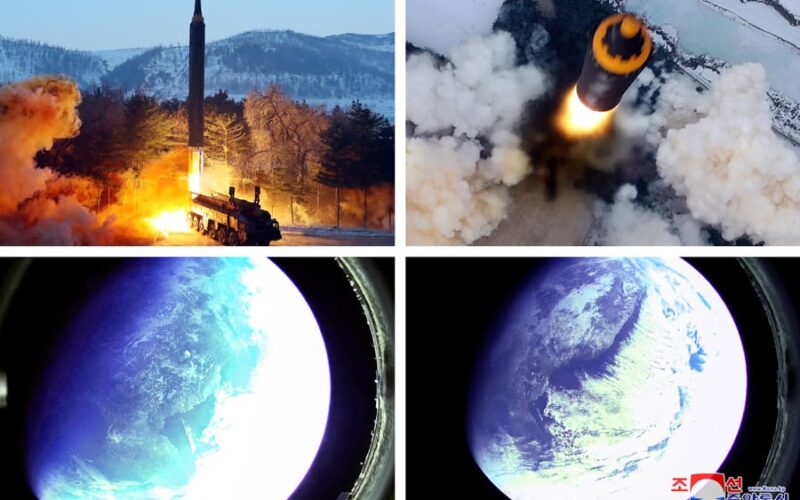North Korea has completed a successful test-fire of a Hwasong-18 intercontinental ballistic missile (ICBM) on July 12, 2023, an act which the country’s state-owned media said “serves as a strong practical warning” to the United States.
The Hwasong-18 is a long-range, three-stage ballistic missile and the first solid-fueled ICBM developed by North Korea. It was unveiled during a parade on February 8, 2023, to commemorate the 75th anniversary of the founding of the Korean People’s Army.
This launch marks the second test of North Korea’s latest ICBM.
Korean Central News Agency (KCNA) reported it was the longest yet. The missile flew a distance of around 1,000 kilometers for more than 70 minutes at an altitude of over 6,000 kilometers.
The “new-type” missile landed in waters near Japan. The Japanese Coast Guard said it took off at 9:59 am local time and fell into the Sea of Japan at 11:15 am.
The act was condemned by the United States and leaders in South Korea and Japan.
The United Nations Security Council (UNSC) agreed to meet and discuss the missile launch on July 13, 2023.
Despite UNSC sanctions prohibiting such actions, North Korea has continued more than 100 ballistic missile tests since the beginning of 2022 and is suspected to be preparing for a seventh nuclear test.
“It demonstrates that the DPRK continues to prioritize its unlawful weapons of mass destruction and ballistic missile programs over the well-being of its people,” commented US Department of State spokesperson Matthew Miller in a press briefing following the launch.
“We urge all countries to condemn these violations and call on the DPRK to come to the table for serious negotiations,” he added.
Tensions between the countries began to mount after the Democratic People’s Republic of Korea (DPRK) warned the US that it would “pay a dear price for provocative air espionage” on July 10, 2023.
North Korean leader Kim Jong Un, who was present at the launch, called it an “important stride” in the regime’s nuclear weapons program and vowed to conduct a series of “stronger military offensives” against the US in the near future.

